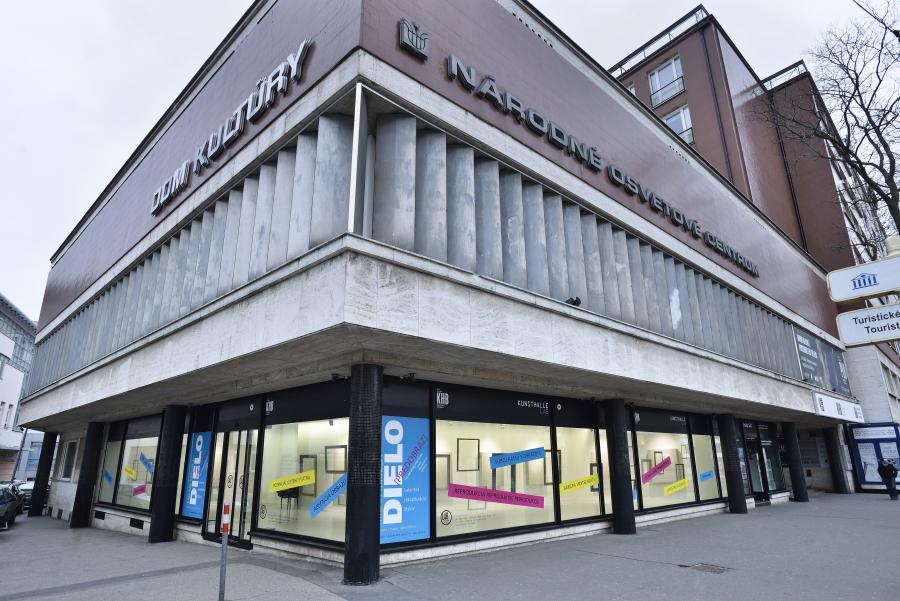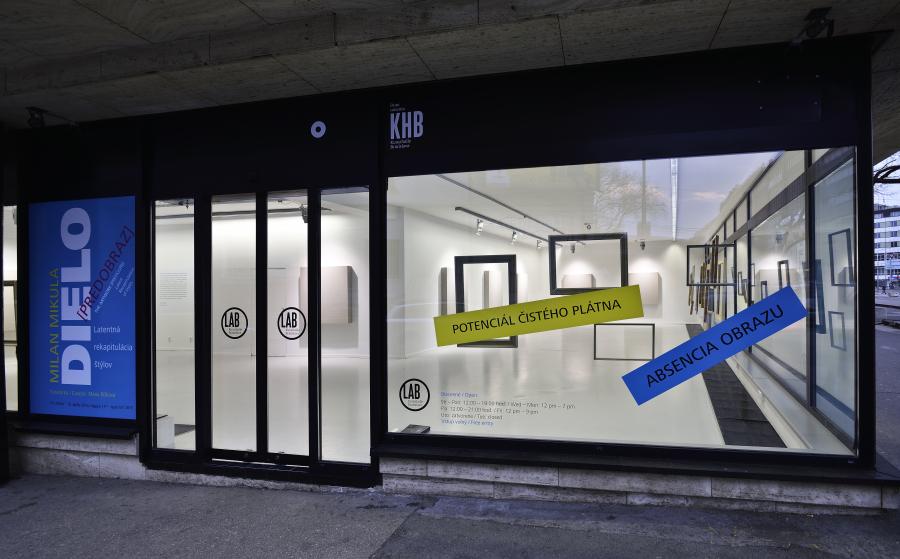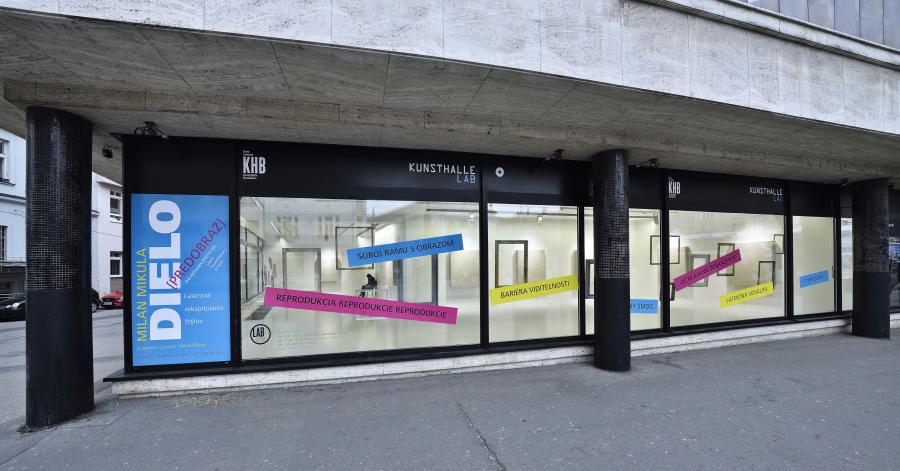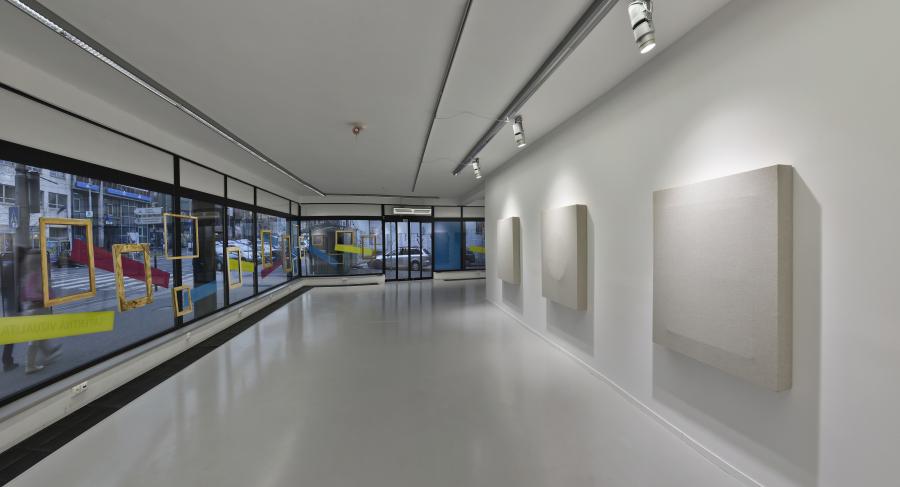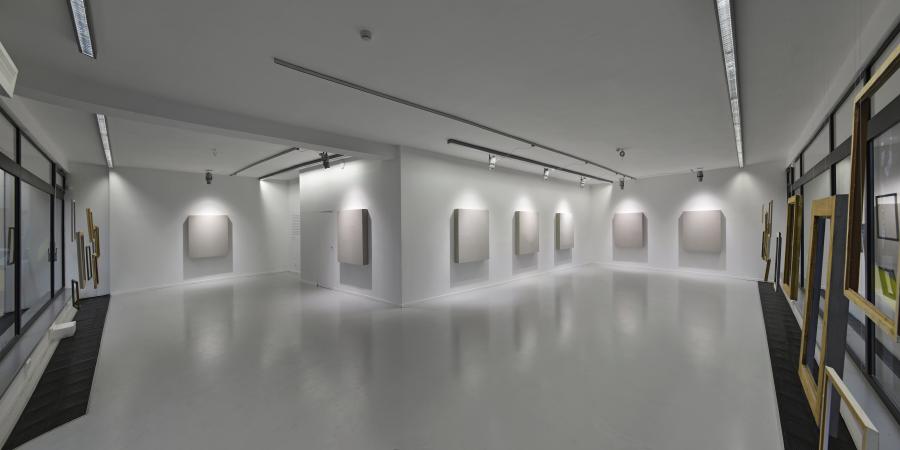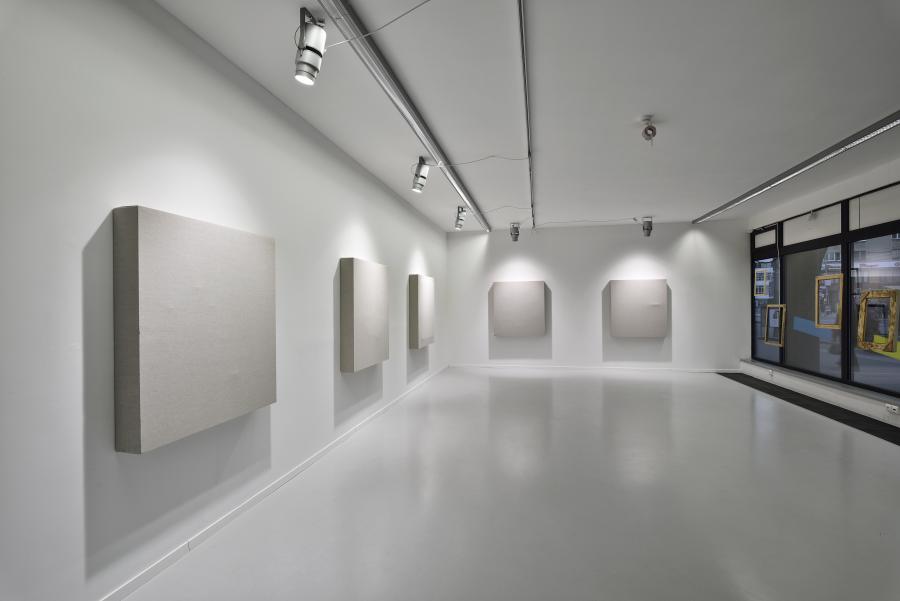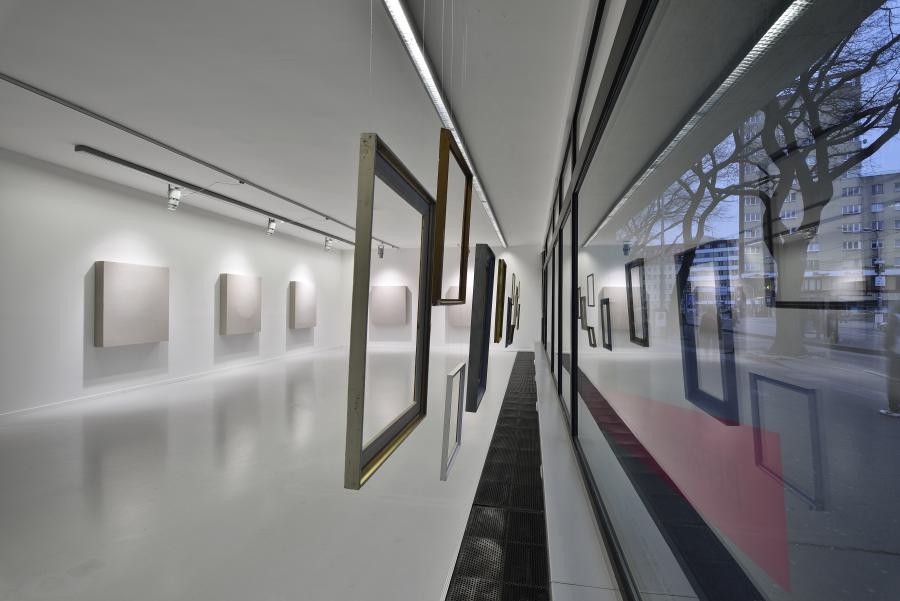DIELO (PREDOBRAZ) Latentná rekapitulácia štýlov
“We live in a world where there is still so much more unknown than known.”
Unknown Author
For Milan Mikula, an ideal place for embodying his ideas is a laboratory – bot not an ordinary one, rather a cross of an inventor’s workshop in a mad avant-gardist’s studio that we’ve entered in the middle of his most recent experiment. We have a feeling that the object of this experiment is a work of art, leaving us curious about its hypothesis.
Judging by what’s presented on display, we are witnessing a frame of the artwork combating with the painting. As we observe the potential of the naked canvas, we’re wondering whether this is some visual smog or just another reproduction. The frames in displays evoke the original function of the space – a shop named Dielo (Artwork) that closed its door over a decade ago. This motif is, however, a secondary one, significant only for the local context, resembling Mikula’s tendencies to play with words and their meaning in different layers, which might be confusing for the passer-byes.
The real object of Mikula’s experiment is not the artwork itself, but rather its prefigure – the “pre-condition” of its creation, the background impulses, circumstances, processes and contexts. The artwork is absent; the empty frame seems to be awaiting some content (or has it lost it already?), turning the naked canvas into its potential substitution.
Prefigure is one of the permanently recurring notions/concepts present in the oeuvre of Milan Mikula. His paintings often arise as “works in progress”. One motif is added to another, modifying it while being formed by the process, adapting impulses followed by responses, which are then translated into further situations and artworks. Mikula creates his works step by step, interested in turning points, as well as the moments preceding and following them.
The interactive environment of the ARTWORK (PREFIGURE). Latent Recapitulation of Styles can be considered as an expression of the core principle of Milan Mikula’s work. We are witnessing potential creation of a painting, a process triggered by the viewer’s movement. The artists is “merely” the architect of the background, the author of the idea and the designer of the context providing creative impetus and letting the viewer intervene into his own work subsequently.
The question is: Who or what is the spiritus movens in this process? Is it the author, the viewer, or the avant-garde styles the traces of which are apparent to attentive observers as they step closer to the canvas? Forms of expressionism, pointillism, vorticism, surrealism, postmodernism, constructivism and minimalism emerge from non-being for a few moments to indicate the major question of how to physically embody an idea so that it will last. However, this line remains uncrossed in the postfigures, leaving the final work uncreated – everything returns to its original state after the viewer-mover and later the mover-author are gone.
“Uncertainty sparks attempts to decipher the cause, foresee the effect while serving as a source of inner restlessness that causes obsessive urgency to comprehend the whole and get behind the barrier of the misunderstood and incomprehensible.” And yet, what comes before or after it remains unimportant, as “we find out that the key is in the constantly dynamic realm of what’s IN BETWEEN.”
Mária Rišková
Exhibition curator
– – – – –
Milan Mikula seems to be omnipresent – he is artistically active on different “scenes” including visual arts, graphic design or scenography. His works address complex philosophical issues such as existence or civilization survival in different situations. The artist examines values and their shifts in this world through communication, illusion, and constant transformation. These subject matters are present in all elements of Mikula’s works – a book is not merely a book but also a rebus; his artworks perform as both integral and provocative parts of the environment designated for them by the artist. His installations often take place in abandoned premises, factory towers, or nonfunctional church properties. In other words, the artist likes using existing “real-world” sceneries as the setting for his artworks. These subject matters and environments are often uplifted by the use of cosmic and absurd elements, as well as interventions in the form of performance and action by the artist himself, who is not afraid to utilize cliché or motifs and themes that are part of the cultural heritage of persons from our region, their generation, and any reasonable individual in general.
– – – – –
– – – – –
